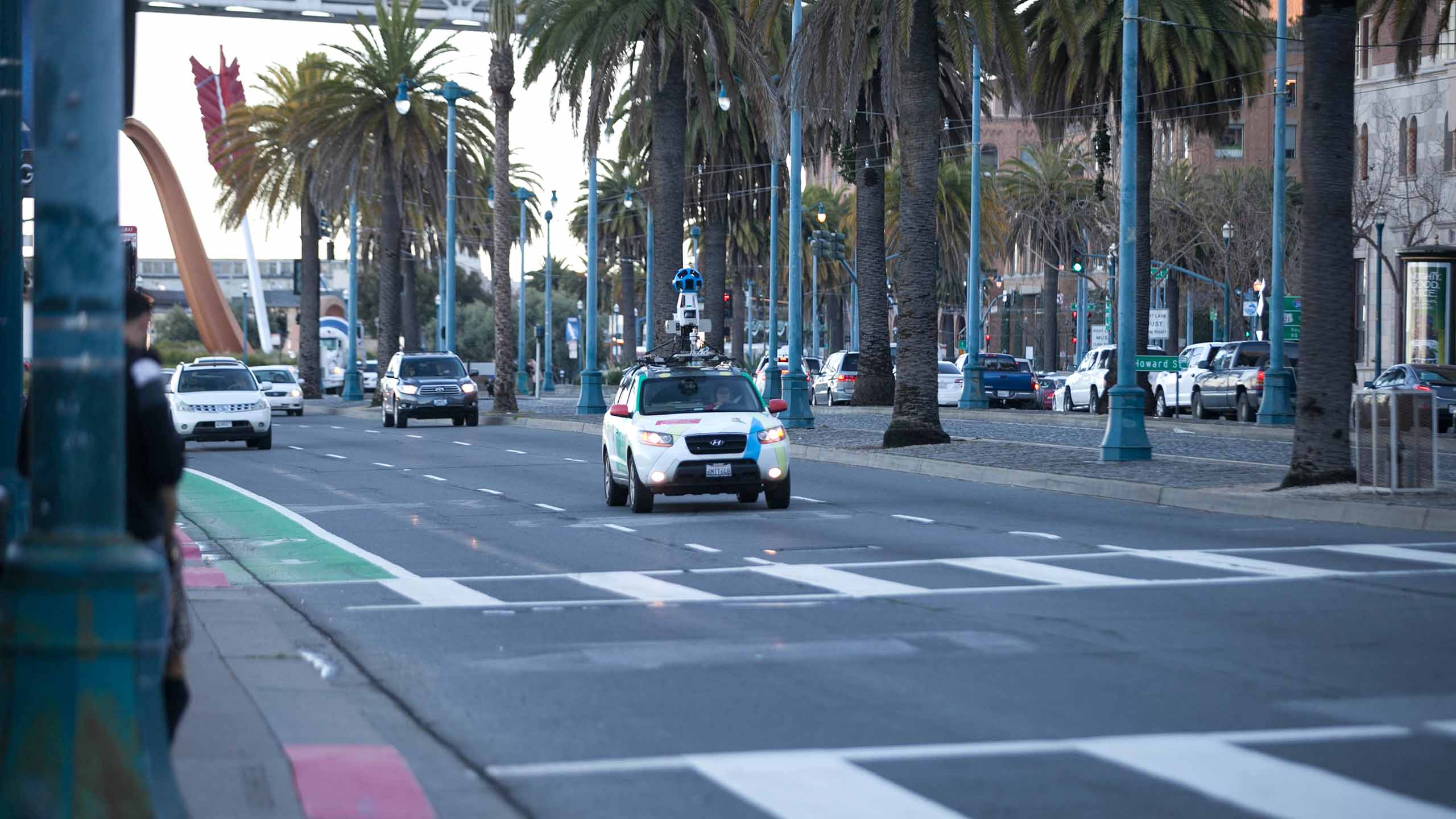 Researchers used Google Street View cars equipped with air monitors to sample pollution levels block by block. Here a car is shown in San Francisco's Embarcadero area. (Image courtesy of Google)
Researchers used Google Street View cars equipped with air monitors to sample pollution levels block by block. Here a car is shown in San Francisco's Embarcadero area. (Image courtesy of Google)Block by block
The amount of air pollution in a community depends greatly on its proximity to emission sources, such as automobiles, factories and power plants. Now, a group of researchers — led by Joshua Apte, assistant professor of civil and environmental engineering and of public health — has shown that levels of air pollution vary not only by region, such as between urban and rural areas, but by city block.
Unlike other air quality studies, where only a few measurements were taken per city, the researchers used Google Street View cars equipped with air monitoring devices operated by Aclima to continuously measure air pollutants street by street. As the cars drove around, the monitoring devices took measurements every second, translating to a measurement about every 10 meters. Over 32 months, the cars covered every street of 13 cities, towns and urban districts in four counties in the San Francisco Bay Area. The researchers found that most variation occurs at the hyperlocal level — from one city block to the next — due to the presence of a pollution source. White populations had 9–14% less exposure to these pollutants than the population average, while Black and Hispanic populations had 8–30% higher exposure than the average.
Their results expanded on the authors’ previous research, published earlier this year, which showed that fine particulate matter (PM2.5), the most deadly air pollutant, disproportionately impacts Americans of color, regardless of income level, state of residence, or urban and rural communities. The findings from that study showed that Black Americans are exposed to greater amounts of air pollution from every source, and that Black, Hispanic and Asian Americans are exposed to higher levels than average from nearly all sources.
“Even as air quality in the U.S. is dramatically cleaner than it was 50 years ago when the Clean Air Act was written, one thing has remained true: although we’ve made this incredible progress with cleaner air, there is a big racial and ethnic disparity in air pollution that still exists,” said Apte.
Learn more: New study shows how air pollution varies block by block
